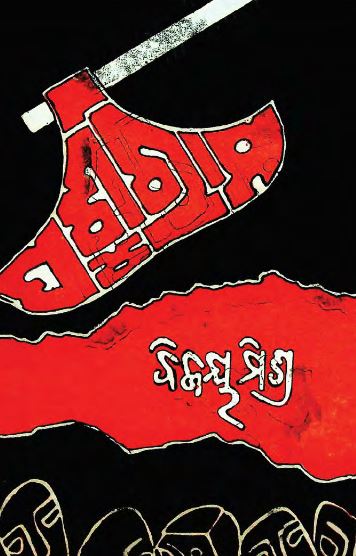Parsurama, an Odia drama penned by Bijaya Misra and published in 1992, stands as a compelling reinterpretation of myth and morality in a dramatic form. Blending traditional narrative elements with modern sensibilities, the drama offers a fresh perspective on the legendary warrior-sage, Parsurama, providing audiences with layers of sub-dramatic narratives that explore themes of vengeance, duty, and transformation.
At its core, Parsurama delves into the mythological saga surrounding its titular character, reimagining his life as both a relentless warrior and a contemplative sage who wrestles with his inner demons and ethical dilemmas. Unlike conventional plays that often relegated mythological figures to one-dimensional roles, Bijaya Misra’s portrayal is multi-dimensional. The sub-drama within Parsurama is intricately woven, allowing the audience to experience not just the external conflicts against adversaries but also the internal struggles of a man caught in the web of destiny, honor, and remorse.
The drama is structured to reveal layers of conflict. On one level, Parsurama is depicted as a formidable force who defies the established order, taking on oppressive rulers and corrupt systems with an iron will. This external conflict drives the narrative forward, showcasing spectacular confrontations and strategic brilliance that are characteristic of epic drama. Yet, as the drama unfolds, the sub-drama begins to emerge—a quieter, introspective examination of the consequences of such relentless retribution. Through a series of poignant soliloquies and intimate dialogues, Parsurama reflects on his life choices, questioning the morality of his actions and the toll exacted by his own righteousness.
Bijaya Misra excels in using these sub-dramatic elements to inject a philosophical depth into the narrative. The dramatic tension is not solely maintained through physical confrontations; it also thrives on the internal battle that Parsurama grapples with. The play invites the audience to explore the paradox of a hero whose valor is shadowed by the burden of his deeds. In doing so, Parsurama becomes more than a mere mythological hero; he transforms into a symbol of the eternal human struggle with power, guilt, and redemption.
The language of the play pays homage to traditional Odia literary styles, yet it remains accessible to contemporary audiences. Rich imagery, nuanced metaphors, and thematic symbols are interlaced throughout, making every dialogue and scene an invitation to reflect on broader existential questions. The use of traditional dramatic forms combined with innovative narrative techniques creates an interplay between the old and the new, mirroring the internal conflict of Parsurama himself.
Moreover, the play’s sub-drama extends to its portrayal of secondary characters who mirror various aspects of Parsurama’s psyche. These subplots, though distinct, are interdependent, ultimately converging to highlight the central themes of duty, honor, and the cost of vengeance. In doing so, Bijaya Misra not only updates a timeless myth but also captures the nuanced experience of walking the line between heroic idealism and the tragic burdens of retribution.
Parsurama, with its layered narrative and rich sub-dramatic content, offers an experience that is as intellectually stimulating as it is emotionally resonant. It remains a significant work in contemporary Odia drama, inviting audiences to rethink the traditional archetypes of myth and to recognize the complex interplay between power, ethics, and the human spirit.
Books Info
| Books name | Parsurama |
| Author | Bijaya Misra |
| No Of pages | 89 |
| Publisher | Shatandru Prakashani |
| Publication | 1992 |
| Printed At | Sri Nishamani Press |
| Distributor | NA |

